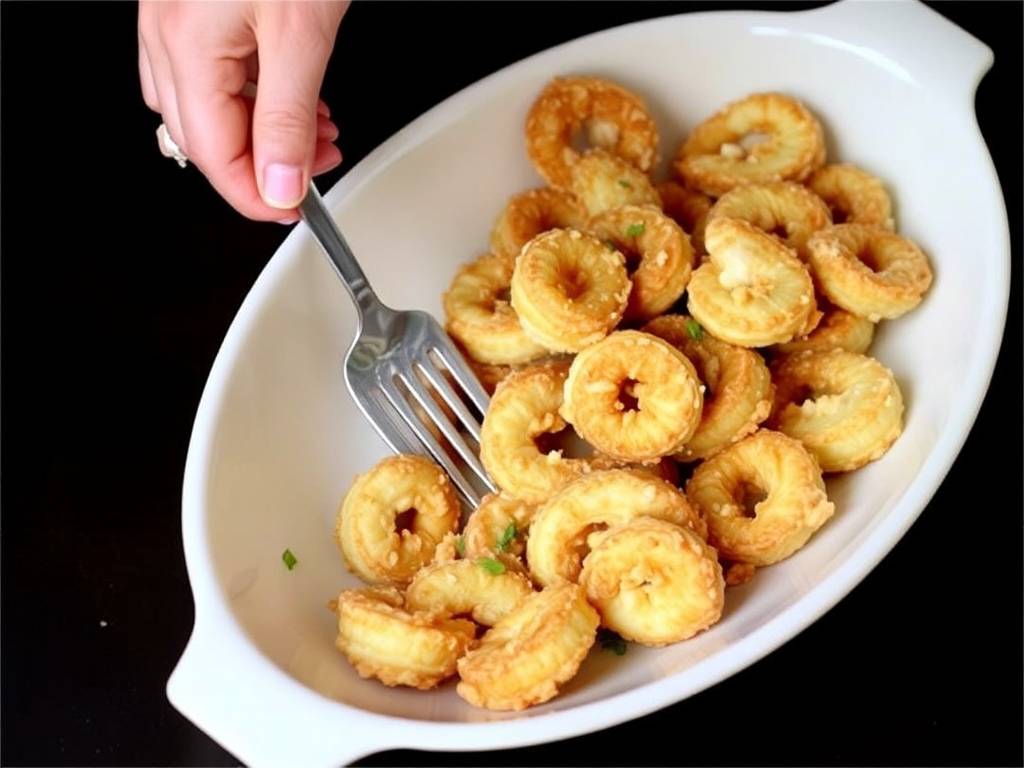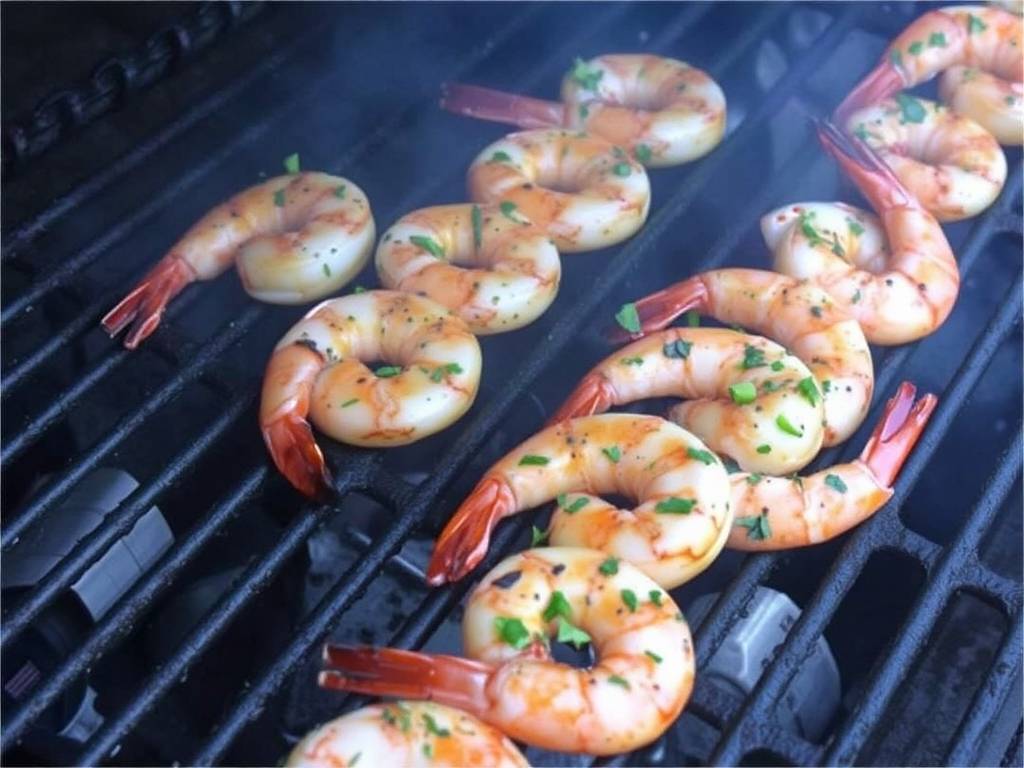The Ultimate Guide to Perfectly Crispy Fried Calamari with Lemon
There's something universally delightful about a plate of golden, crispy fried calamari. That satisfying crunch giving way to tender, sweet squid, all brightened with a fresh squeeze of lemon—it's a classic for a reason. Yet, so many home cooks are intimidated by the process, fearing rubbery squid or a soggy, greasy coating. I'm here to tell you that achieving restaurant-quality crispy fried calamari at home is not only possible, it's surprisingly straightforward. This comprehensive guide will walk you through every single step, demystifying the process and ensuring you create the most delicious fried calamari you've ever tasted, right in your own kitchen.
Let's start with the star of the show: the squid. The single most important factor for tender calamari, and the one most often overlooked, is the cooking time. Squid cooks in a flash. Undercook it, and it's unpleasantly gooey. Overcook it, and it turns tough and rubbery. The sweet spot is a brief, high-heat fry that sets the coating and cooks the squid through in about 60-90 seconds. For the best results, you can purchase whole squid and clean them yourself, which is more economical, or you can buy pre-cleaned squid tubes and tentacles, which saves time. If you're using frozen squid, ensure it's fully thawed in the refrigerator and then pat it completely dry. Any excess moisture is the enemy of crispiness.

Now, for the preparation. Whether you have rings or whole tentacles, the key is to ensure they are uniformly sized for even cooking. Slice the tubes into ½-inch to ¾-inch rings. Don't discard the tentacles! They are packed with flavor and have a wonderful texture. Just trim away the beak and any hard parts. Once your squid is cut, place it in a bowl and, for an extra layer of flavor and tenderness, you can toss it with a splash of buttermilk or milk and let it sit for 15-30 minutes. This step is optional, but it does help tenderize the squid slightly and allows the coating to adhere better. Before coating, drain the milk and pat the squid completely dry with paper towels. I cannot overstate this: dry squid is non-negotiable for a crispy crust.
The coating is where the magic of texture happens. A simple, well-seasoned flour mixture is often all you need. In a large, shallow bowl or a zip-top bag, combine all-purpose flour with your chosen seasonings. A classic blend includes salt, freshly ground black pepper, and perhaps a bit of garlic powder and paprika for color and a subtle smoky note. For an extra-crispy fried calamari coating, many chefs swear by a combination of all-purpose flour and cornstarch. A ratio of about 3 parts flour to 1 part cornstarch works wonderfully, as the cornstarch inhibits gluten development and promotes a lighter, crispier finish. Some people also like to add a small amount of baking powder for extra airiness. This is the secret to that incredibly light and shatteringly crisp texture we all love.
For those looking for a different twist, you can explore a beer batter for fried calamari. The carbonation in the beer creates a wonderfully light and airy batter. Simply mix a light lager or pilsner with flour and a pinch of salt until just combined (a few lumps are fine). Dip your dried squid into this batter and then straight into the hot oil. This method yields a thicker, puffier crust that is equally delicious.
The single most critical element for success, even more important than the coating itself, is the oil and the frying technique. You must use an oil with a high smoke point. Canola oil, vegetable oil, peanut oil, or sunflower oil are all excellent choices for deep frying calamari. You'll need enough to fill your pot or deep fryer by about 3 inches, ensuring the calamari can float freely. The ideal temperature for frying calamari is between 350°F and 375°F (175°C - 190°C). Use a deep-fry or candy thermometer; guessing will lead to disappointment. If the oil is too cool, the calamari will absorb oil and become greasy. If it's too hot, the coating will burn before the squid is cooked through.
When you're ready to fry, work in small batches. Do not overcrowd the pot! Adding too much squid at once will cause the oil temperature to plummet, resulting in soggy, oily calamari. Gently lower a small handful of coated squid into the hot oil. They should immediately sizzle and begin to cook. Fry for 60 to 90 seconds, until they are a pale golden color. They will continue to darken slightly after you remove them. Use a slotted spoon or spider strainer to transfer the fried calamari to a wire rack set over a baking sheet. Do not drain them on paper towels, as this can trap steam and make the bottom side soggy. The wire rack allows air to circulate, keeping everything crisp. Season immediately with a little flaky sea salt while they are still hot.
As you finish one batch, let the oil come back up to the correct temperature before adding the next. This consistent heat is the secret to perfectly fried food. Once all your calamari is fried, you can do a quick "double fry" if you want maximum crispiness. Simply bring the oil back to temperature and fry all the calamari a second time for another 20-30 seconds until deeply golden and super crispy. This double-frying technique is a pro move for an unbeatable texture.
Now, for the accompaniments. The classic partner is, of course, lemon. Serve your crispy fried calamari with fresh lemon wedges. The bright, acidic juice cuts through the richness of the fried food beautifully. For a dipping sauce, a simple marinara sauce is traditional. For something creamier, a lemon aioli or a spicy sriracha mayo is fantastic. To make a quick lemon aioli, simply mix mayonnaise with minced garlic, lemon zest, lemon juice, and a pinch of salt.
To complete your meal, consider what to serve with fried calamari. It makes a fantastic appetizer, but it can also be the star of a main course. Serve it over a bed of mixed greens for a fried calamari salad, toss it with pasta and a light lemon-butter sauce, or simply pile it high on a platter with crispy french fries and coleslaw for a classic seafood shack feast.

Finally, if you have any leftovers (a rare occurrence!), the best way to reheat fried calamari is in an air fryer or a conventional oven preheated to 375°F (190°C). Spread the calamari in a single layer and heat for 3-5 minutes until hot and crisp again. Avoid the microwave, as it will turn them soft and rubbery.
Making crispy fried calamari with lemon is a rewarding culinary project. By focusing on dry squid, a well-balanced coating, and, most importantly, proper oil temperature, you are guaranteed success. So, grab your squid, heat that oil, and get ready to impress your family and friends with a plate of the most delicious, golden-brown, perfectly crispy homemade fried calamari. Happy frying






发表评论